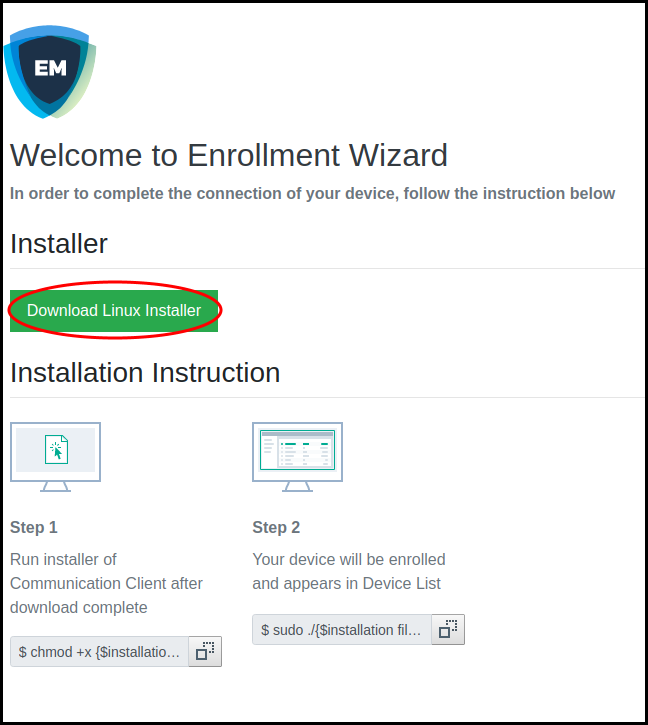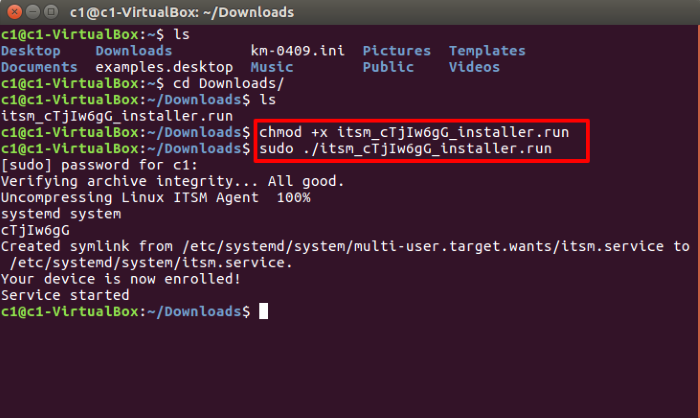Enroll Linux OS Endpoints
- After you have completed the setup process, Endpoint Manager will send an email to your users containing device enrollment instructions.
- The email contains instructions on how to install the EM communication client on their device.
- Users should open the email and complete the installation on the actual endpoint you want to enroll.
- After installing the communication client, the endpoint will automatically to connect to the EM server.
Supported distributions
- Ubuntu 20.x
- Ubuntu 19.x
- Ubuntu 18.x
- Ubuntu 16.x
- Cent OS 8.x
- Cent OS 7.x
- Debian 8.x
- Debian 9.x – 10.x
- Red Hat Enterprise 7
Enroll a Linux device
- Open the mail on the target device and click the enrollment link. This will start the setup wizard.
- Click the 'Download Linux Installer' button and save the file:

You can install the communication client on the Linux device by completing the following:
-
Change installer mode to executable – enter the following command:
$ chmod +x {$installation file$}
-
Run installer with root privileges – enter the following command:
$ sudo ./{$installation file$}
For example:
chmod +x itsm_cTjIw6gG_installer.run
sudo./itsm_cTjIw6gG_installer.run

- After installation, the communication client will connect to the Endpoint Manager and enroll the device.
- If Comodo Client Security (CCS) is included in the setup process, then it is installed automatically. Else you can install CCS manually after device enrollment is complete. See Remotely Install Packages on Linux Devices for more details.
- After installing CCS, any EM configuration profiles associated with the user will be applied to the device. See Assign Configuration Profile(s) to a Users' Devices and Assign Configuration Profiles to a User Group for more details.
- If no profiles are defined for the user then the default profiles for Linux are applied. See Manage Default Profiles for more details.
The device can now be remotely managed from the EM console.



